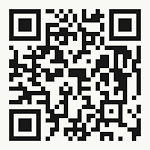The story of V-2 ended up Down Under is an intriguing one that involves science, politics and Cold War anxieties.
Australia's two V-2s are currently in storage at an Australian War Memorial (AWM) facility in suburban Canberra.
"When they came out [to Australia] flocks of people crowded to view them and see these Nazi terror weapons," said Shane Casey, senior curator of military heraldry and technology at the AWM.
One is mostly complete. Its components were seized after the war and put together as part of Operation Backfire, a mission by the Allies to capture and test German military technology.
"When the Allies conquered Germany, they found largely disassembled rockets or rockets ready to be assembled," Mr Casey said.
The Meillerwagen trailer accompanying the V-2, which was used to raise the rockets onto launch pads, is one of the few surviving examples of the technology.
The other V-2, which left London's docks aboard the vessel Karamea in February 1947, is today in bits, which are themselves in disrepair. It was shipped to Australia primarily as a museum piece, and little is known about its origins.
"There was some confusion as to whether it was destined for the Australian War Memorial or whether it was destined for the RAAF at Woomera. There seems to have been some dissension in official channels about that."
The missile was trucked around the country as part of a fundraising mission, and video shows it outside Old Parliament House. One of the purposes of having the rockets in Australia was to boost public interest in science, especially the emerging field of space research.
In 1948, the media was invited to view the more complete V-2 at Salisbury, where scientists had been inspecting it for design clues. That work was part of efforts to develop a local rocket program for defence - a project that also included the Woomera range. At some point over the next few years, it was painted with a different colour scheme. The trail goes cold until 1954, when the rocket was put on display at a Salisbury school and at the Mallala air show.
By the late 60s, Australia became the third nation to design and launch a satellite to orbit the earth. Design work on Australia’s first satellite began in early 1967 as a joint venture between the Weapons Research Establishment (WRE) and the University of Adelaide. With, The US and the UK providing assistance on the project, including the US Department of Defense, NASA, and the UK’s Ministry of Technology.
Sources:
http://www.abc.net.au/news/2017-09-29/the-nazi-rockets-that-travelled-down-under/8977048
http://www.v2rocket.com/start/others/aussie.html
http://www.v2rocket.com/start/others/point-cook.html
Mallala Airshow September 1955 V2 rocket / https://www.flickr.com/photos/mallalamuseum/7757143556
https://en.wikipedia.org/wiki/WRESAT
https://www.dst.defence.gov.au/innovation/wresat-%E2%80%94-weapons-research-establishment-satellite
 |
| One of the captured V-2s in an Australian workshop. |
"When they came out [to Australia] flocks of people crowded to view them and see these Nazi terror weapons," said Shane Casey, senior curator of military heraldry and technology at the AWM.
One is mostly complete. Its components were seized after the war and put together as part of Operation Backfire, a mission by the Allies to capture and test German military technology.
"When the Allies conquered Germany, they found largely disassembled rockets or rockets ready to be assembled," Mr Casey said.
The Meillerwagen trailer accompanying the V-2, which was used to raise the rockets onto launch pads, is one of the few surviving examples of the technology.
The other V-2, which left London's docks aboard the vessel Karamea in February 1947, is today in bits, which are themselves in disrepair. It was shipped to Australia primarily as a museum piece, and little is known about its origins.
"There was some confusion as to whether it was destined for the Australian War Memorial or whether it was destined for the RAAF at Woomera. There seems to have been some dissension in official channels about that."
The missile was trucked around the country as part of a fundraising mission, and video shows it outside Old Parliament House. One of the purposes of having the rockets in Australia was to boost public interest in science, especially the emerging field of space research.
In 1948, the media was invited to view the more complete V-2 at Salisbury, where scientists had been inspecting it for design clues. That work was part of efforts to develop a local rocket program for defence - a project that also included the Woomera range. At some point over the next few years, it was painted with a different colour scheme. The trail goes cold until 1954, when the rocket was put on display at a Salisbury school and at the Mallala air show.
By the late 60s, Australia became the third nation to design and launch a satellite to orbit the earth. Design work on Australia’s first satellite began in early 1967 as a joint venture between the Weapons Research Establishment (WRE) and the University of Adelaide. With, The US and the UK providing assistance on the project, including the US Department of Defense, NASA, and the UK’s Ministry of Technology.
Sources:
http://www.abc.net.au/news/2017-09-29/the-nazi-rockets-that-travelled-down-under/8977048
http://www.v2rocket.com/start/others/aussie.html
http://www.v2rocket.com/start/others/point-cook.html
Mallala Airshow September 1955 V2 rocket / https://www.flickr.com/photos/mallalamuseum/7757143556
https://en.wikipedia.org/wiki/WRESAT
https://www.dst.defence.gov.au/innovation/wresat-%E2%80%94-weapons-research-establishment-satellite

















































